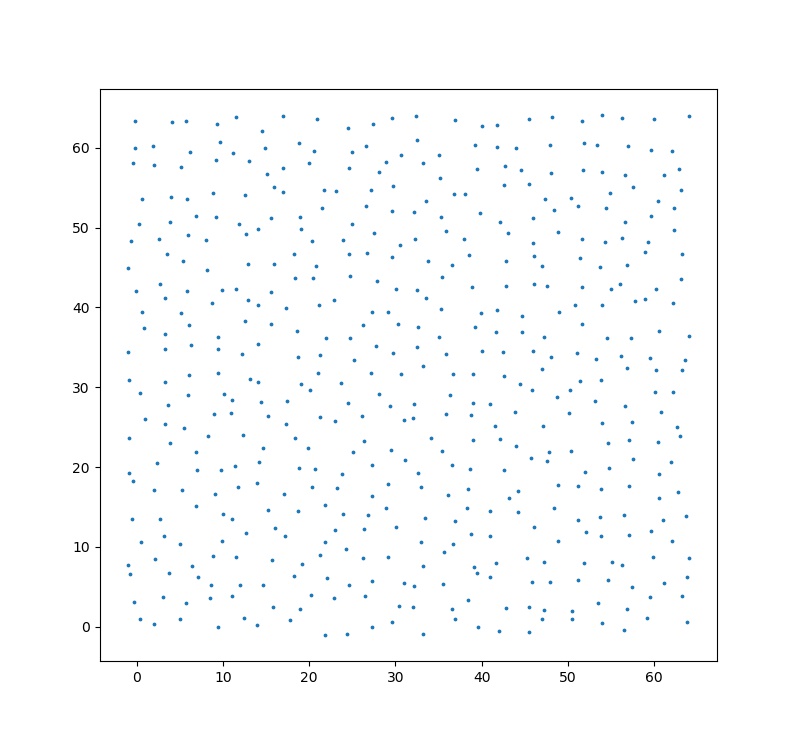I am trying to generate an efficient code for generating a number of random position vectors which I then use to calculate a pair correlation function. I am wondering if there is straightforward way to set a constraint on the minimum distance allowed between any two points placed in my box.
My code currently is as follows:
def pointRun(number, dr):
"""
Compute the 3D pair correlation function
for a random distribution of 'number' particles
placed into a 1.0x1.0x1.0 box.
"""
## Create array of distances over which to calculate.
r = np.arange(0., 1.0+dr, dr)
## Generate list of arrays to define the positions of all points,
## and calculate number density.
a = np.random.rand(number, 3)
numberDensity = len(a)/1.0**3
## Find reference points within desired region to avoid edge effects.
b = [s for s in a if all(s > 0.4) and all(s < 0.6) ]
## Compute pairwise correlation for each reference particle
dist = scipy.spatial.distance.cdist(a, b, 'euclidean')
allDists = dist[(dist < np.sqrt(3))]
## Create histogram to generate radial distribution function, (RDF) or R(r)
Rr, bins = np.histogram(allDists, bins=r, density=False)
## Make empty containers to hold radii and pair density values.
radii = []
rhor = []
## Normalize RDF values by distance and shell volume to get pair density.
for i in range(len(Rr)):
y = (r[i] + r[i+1])/2.
radii.append(y)
x = np.average(Rr[i])/(4./3.*np.pi*(r[i+1]**3 - r[i]**3))
rhor.append(x)
## Generate normalized pair density function, by total number density
gr = np.divide(rhor, numberDensity)
return radii, gr
I have previously tried using a loop that calculated all distances for each point as it was made and then accepted or rejected. This method was very slow if I use a lot of points.

